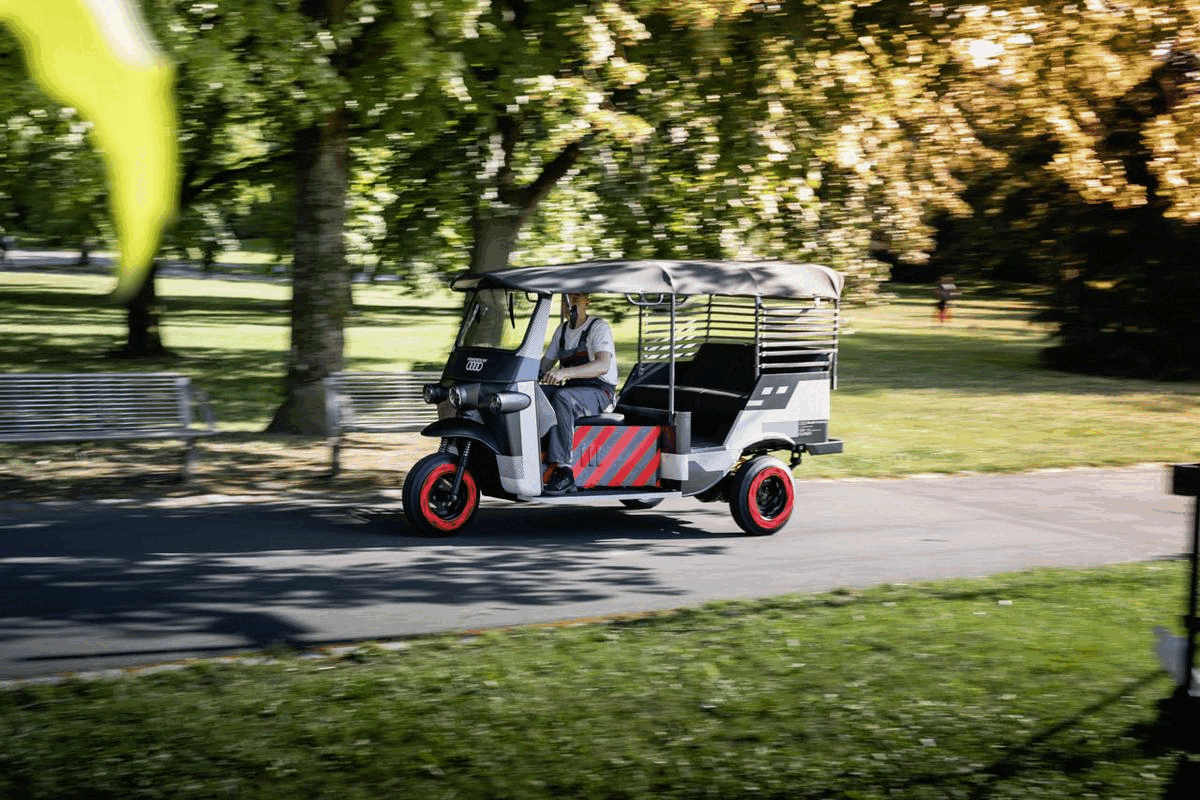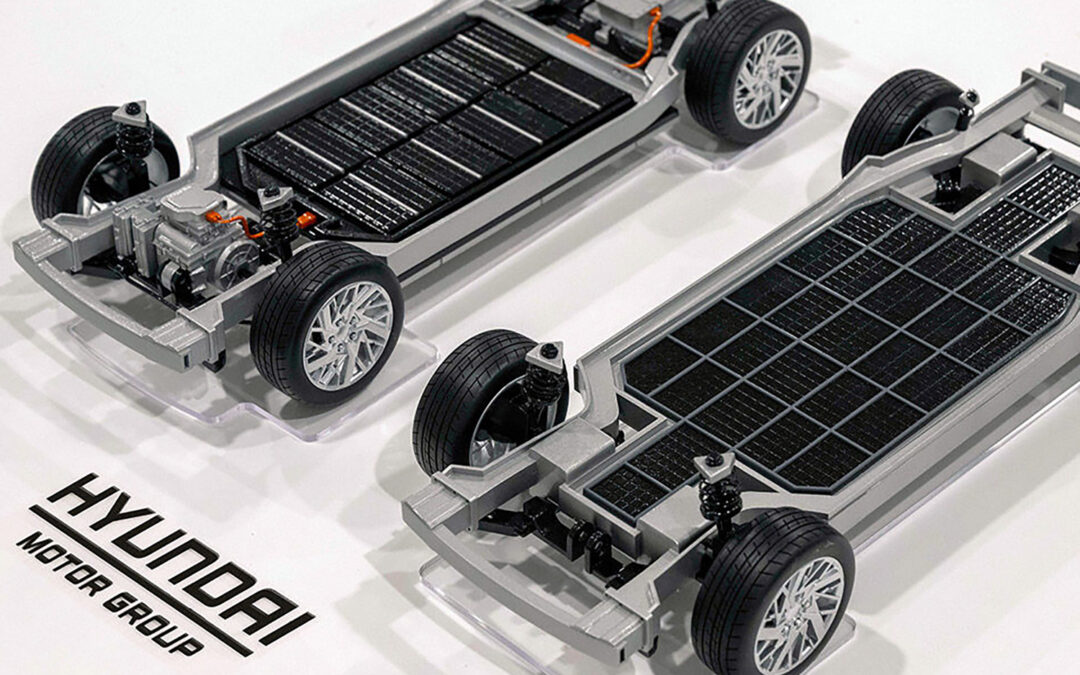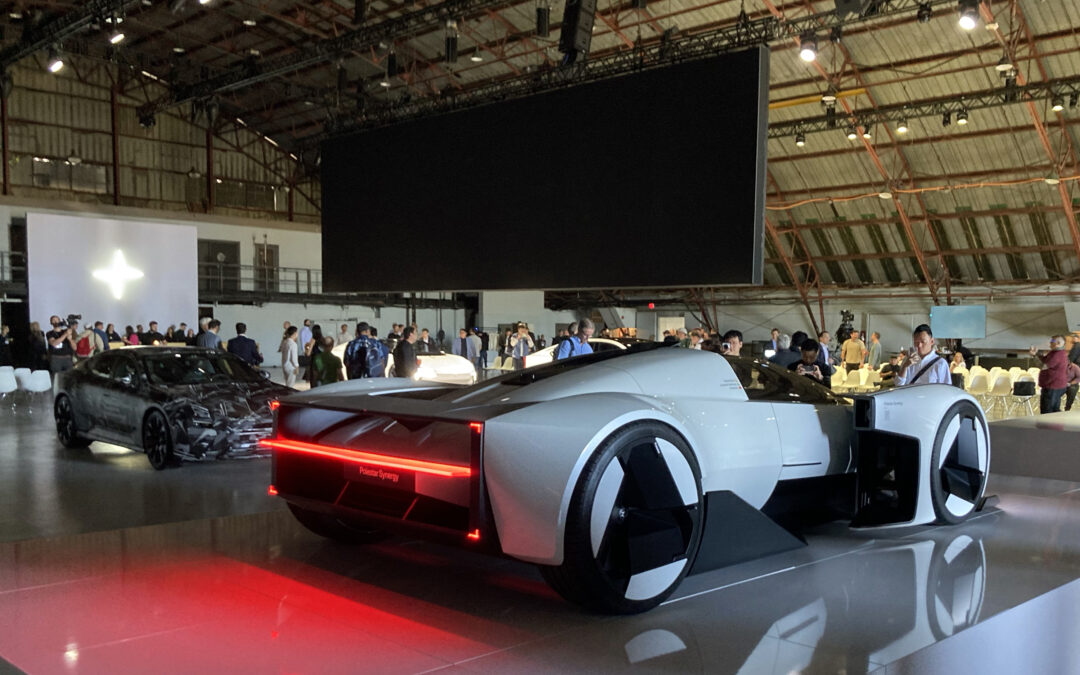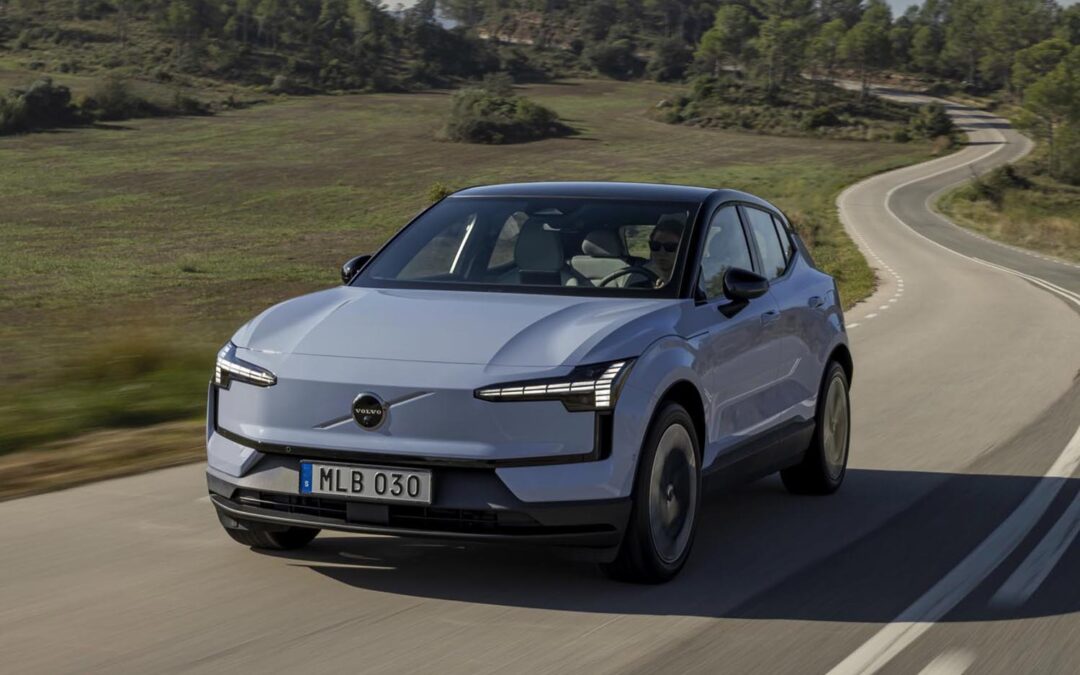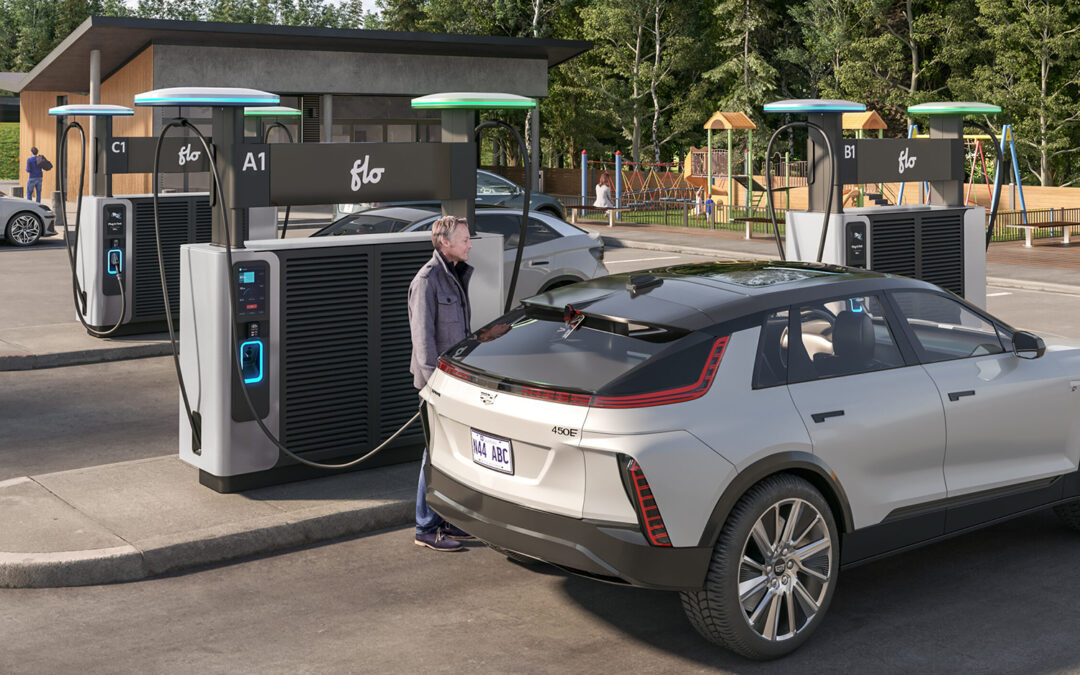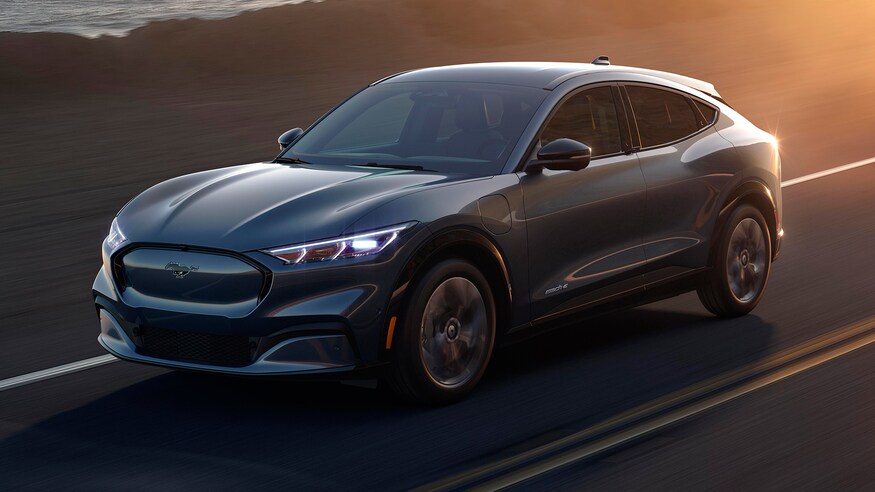Earlier this month, Volkswagen became the latest in an increasingly long line of manufacturers to introduce a new fast-charging hub powered primarily by “second-life” EV batteries, i.e. lithium-ion packs refurbished as energy storage units. A nifty way of reducing waste while simultaneously extending the operating life of these tough-to-recycle battery components.
While fast-charging centres for other EVs are very à la mode these days, there have been more ambitious projects down the years where electric vehicle batteries have been repurposed for, shall we say, more ‘unique’ uses.
Honourable mention: BMW’s i3 powered a Torqeedo speed boat
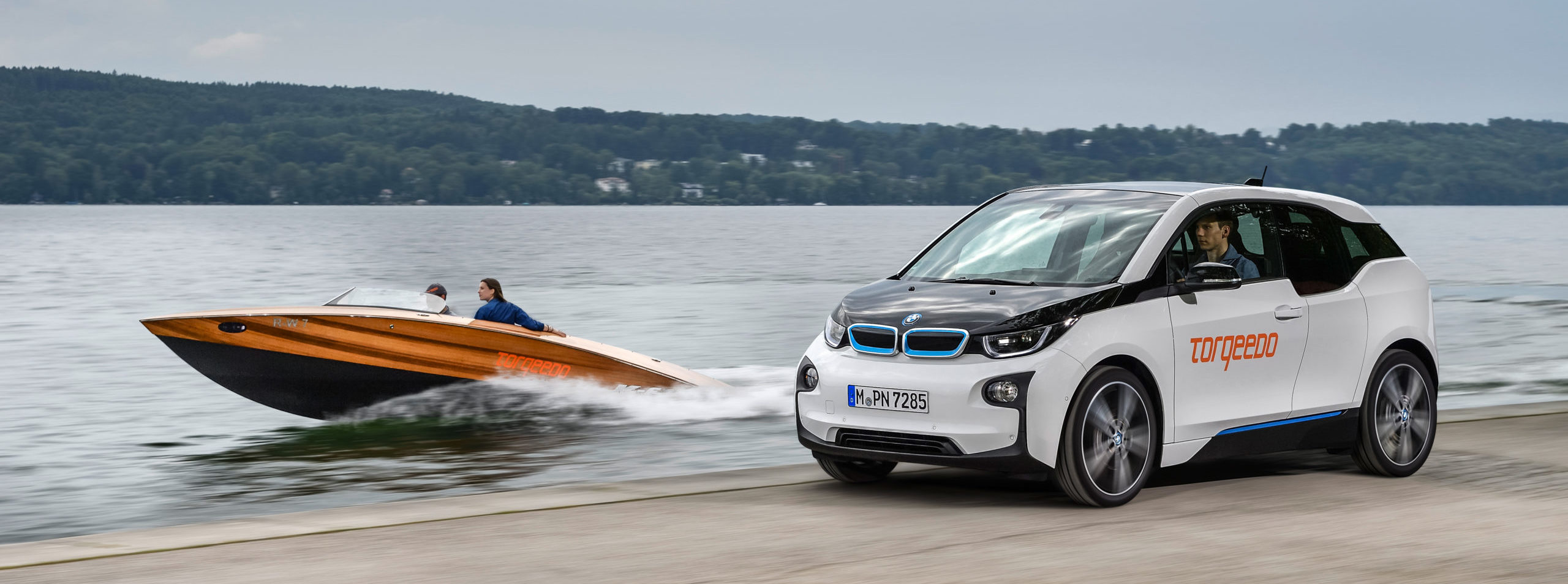
BMW ‘Torqueedo’ boat and the i3
Admittedly, this Torqeedo electric power boat is “second-life” in name only, given that the BMW i3-derived, lithium-ion battery at the heart of the German company’s ‘Deep Blue’ range of inboard and outboard motors was a brand-new example that had recently rolled off BMW’s production belt at Dingolfing. Even so, the 33 kWh unit’s new life on the water in 2017 was a testament to what BMW called “the plug-in and play capability” built into the i3’s powertrain: up to 160 hp of electric propulsion was available when the battery was mated with Torqeedo’s most powerful emissions-free motor.
It was also a slightly more ostentatious example of a similar “sustainable” partnership BMW had signed one year earlier with Beck Automation, the latter of which repurposed actual “retired” i3 batteries as an energy storage system for residential homes. Available in either 22 kWh or 30 kWh guise (average energy use in the US at the time was said to be between 15 and 30 kWh per day), the wall-mounted storage boxes were the first of their kind to incorporate a complete vehicle battery.
1. Audi powers a rickshaw
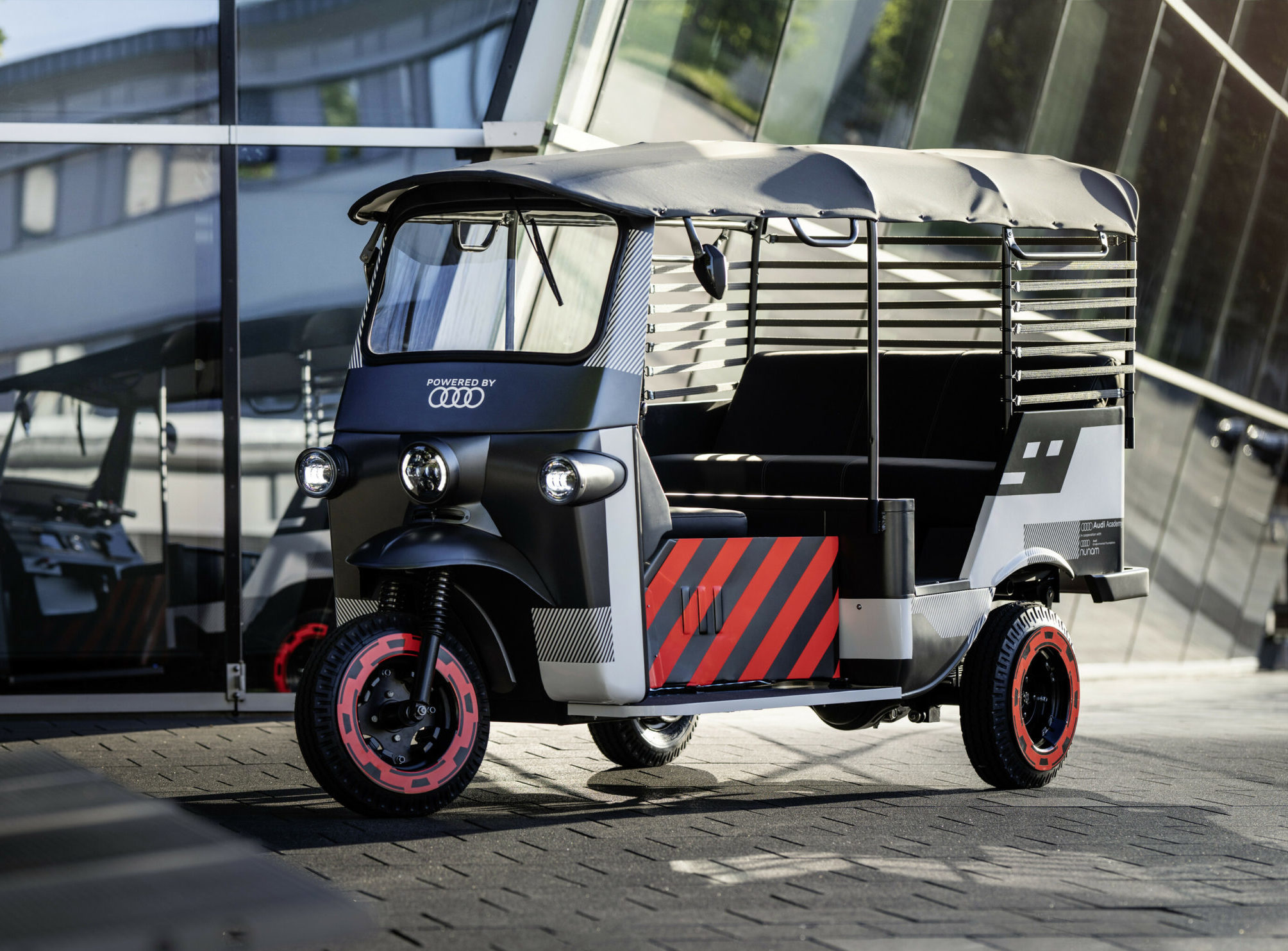
Nunam rickshaw with Audi batteries
One of the most recent additions to this list, German-Indian non-profit start-up Nunam, in collaboration with the Audi Environmental Foundation recently introduced three prototype rickshaws to the roads of India, each of which is powered by second-life batteries sourced from an Audi e-tron.
Stands to reason: the lightweight nature of a rickshaw, plus the limited power and range requirement mean even a partially-spent 71 kWh battery from a 230 kW Audi e-tron 50 would be more than up to the task. That the new electric drivetrain also replaces the less-refined and heavier lead-acid batteries that traditionally power rickshaws is another bonus.
Also unlike traditional rickshaws, which are charged using the national grid, and thus rely heavily on coal-fired power in India, the prototypes are topped up at Nunam-developed charging stations that draw power from solar panels on the roof, a sequence that’s “largely carbon-free.” Alongside their sustainability showcase, Audi states the e-ricks could also strengthen job opportunities, given that they make transporting goods to market that much easier.
In another neat touch, after their first life in an Audi e-tron and their second in a ‘Powered by Audi’-badged rickshaw, the flagging batteries might even spend a third life as LED lighting stands to get “everything possible out of each battery before recycling.”
2. Jaguar powered a race garage, and Extreme E powered its race control
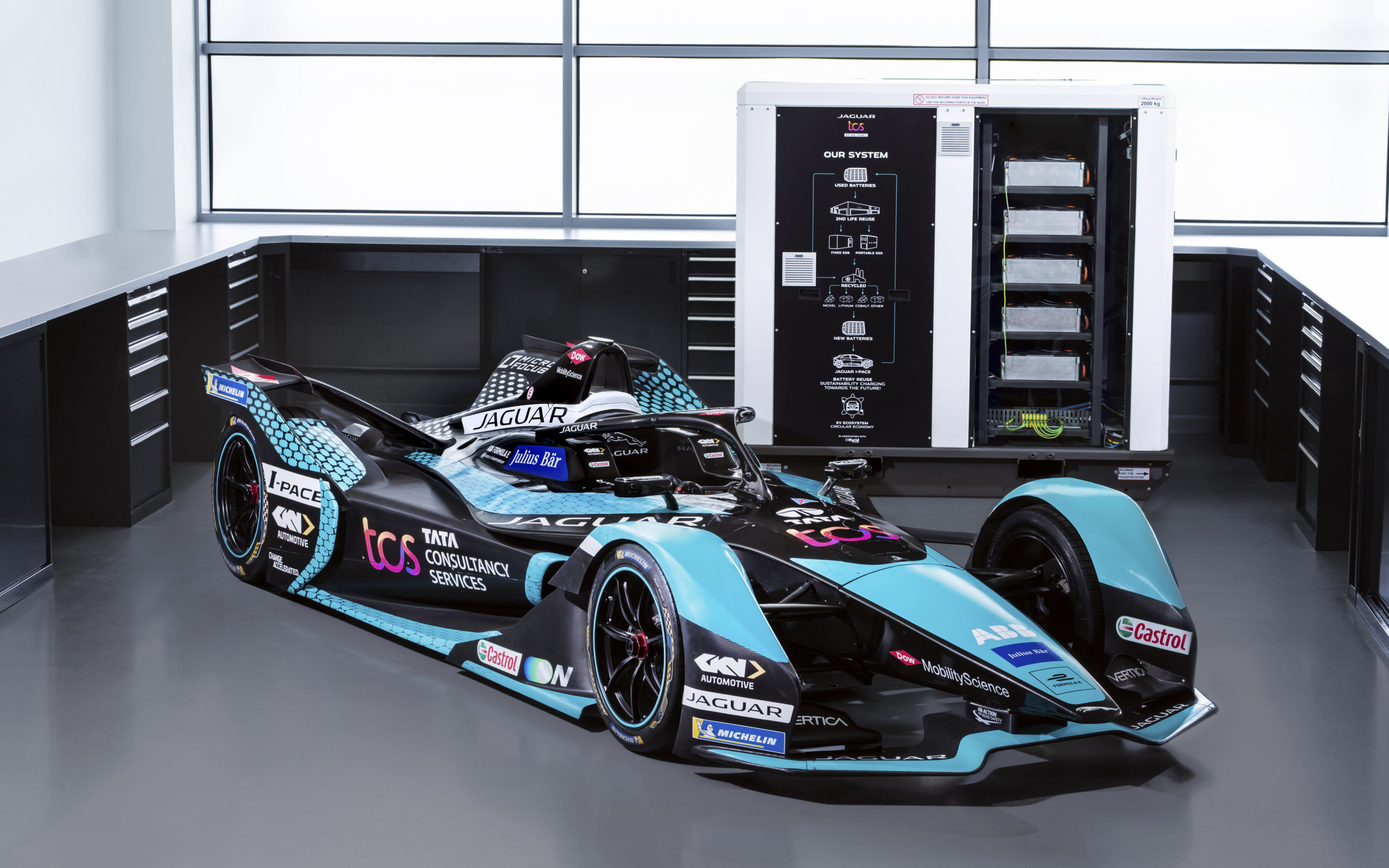
Off Grid Battery ESS by Jaguar TCS Racing
As part of a new partnership with Off Grid Energy back in March, Jaguar, much like Volkswagen and Audi in the months that followed, showcased its own portable power station, one made using recycled lithium-ion cells from one and a half, 90 kWh decommissioned batteries from its I-PACE SUV. Designed for use where access to mains electricity is unavailable, the gridtogo Battery Energy Storage System (ESS), developed in tandem by Jaguar and Pramac, boasted up to 125 kWh capacity when sufficiently charged with solar panels, enough to power a regular family home for up to seven days.
Jaguar though went an altogether different route with its bi-directional storage system, the ESS instead being used to power diagnostic equipment and supply auxiliary power to the Jaguar works racing team during a pre-season test of the all-electric Formula E series. As well as promoting Jaguar’s 2029 carbon neutral target, the ESS proved a good luck charm too, as Mitch Evans won both rounds of the following month’s Rome ePrix.
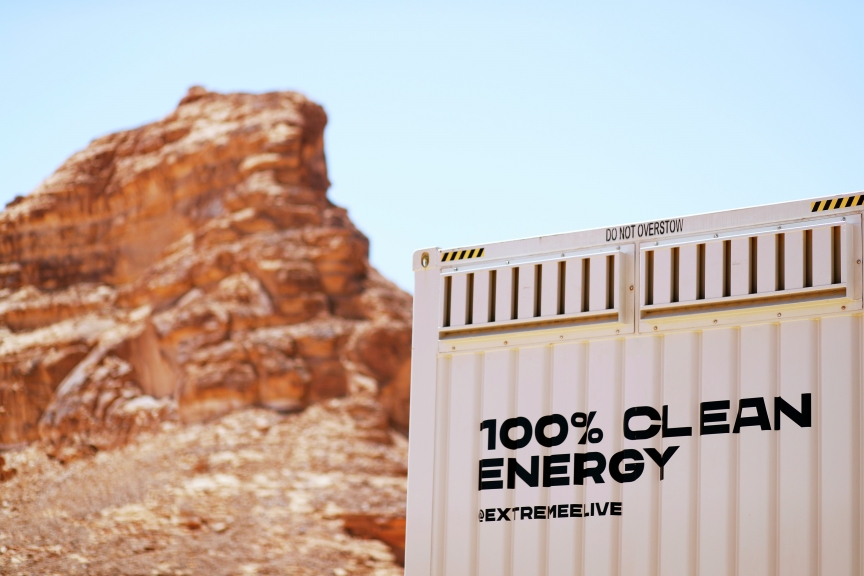
Zenobē battery system used in Extreme E
Amazingly, Extreme-E, the all-electric, off-road rally sister series to Formula E, went even more ambitious with its use of second-life batteries, using an energy storage system developed by London-based Zenobé to provide power for race control, the event media centre, the ODYSSEY 21 racer itself, and even the live broadcast (four further solar-powered systems were also supplied by Power Logistics). Looking to raise awareness of climate change, while simultaneously keeping its own carbon footprint to a minimum, Extreme-E rounds have been held in some of the most remote locations on the planet, including the Medina region of Saudi Arabia, Kangerlussuaq in Greenland, and Lac Rose in Senegal. None of which have access to a local grid.
3. Nissan powered a camping trailer
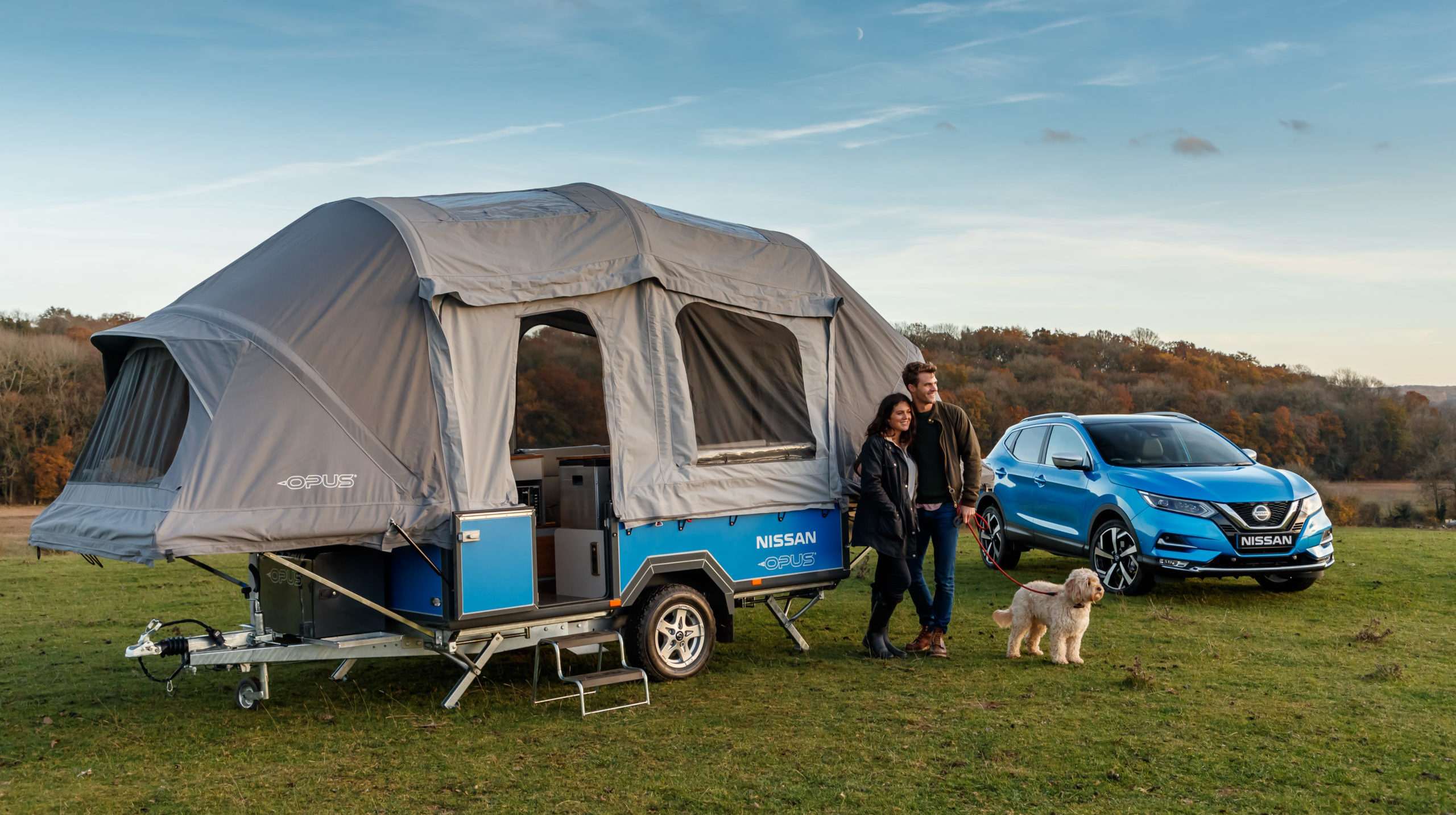
Nissan x OPUS concept camper
One of the more consumer-focused examples on this list arrived in 2019, when Nissan unveiled the x Opus camper.
Developed in collaboration with the camper trailer specialist of the same name, and badged as ‘Nissan Energy’ in deference to the Japanese marque’s vehicle-to-home/building commercial arm, the x OPUS was built using the $20K AIR OPUS camper, launched two years earlier in 2017.
Power came from the ‘ROAM,’ a portable, all-in-one, weatherproof power pack built using a lithium-ion battery lifted from the Nissan LEAF. Storage capacity was a handy 700 Wh, with a power output of 1 kW (by comparison, a standard laptop needs around 0.005 kW to operate). When combined with a solar panel accessory, the ROAM was said to provide enough juice for seven full days off the grid. The ex-LEAF battery also powered the onboard compressor that could inflate the AIR OPUS in around 90 seconds as well as the portable microwave, two-burner gas hob, compact fridge and myriad USBs connected to the camper’s 230-volt circuit. In a neat touch, the ROAM could be removed from its compartment entirely for more convenient charging via a standard three-pin outlet.
Though launched primarily as a concept, this was not the first time the Nissan ROAM had grabbed headlines. Earlier in 2019, an NV300 Concept van, refurbished as a mobile workshop for woodworking using second-life batteries, made its debut at the Brussels Motor Show.
4. Volvo Buses powered residential buildings in Gothenburg
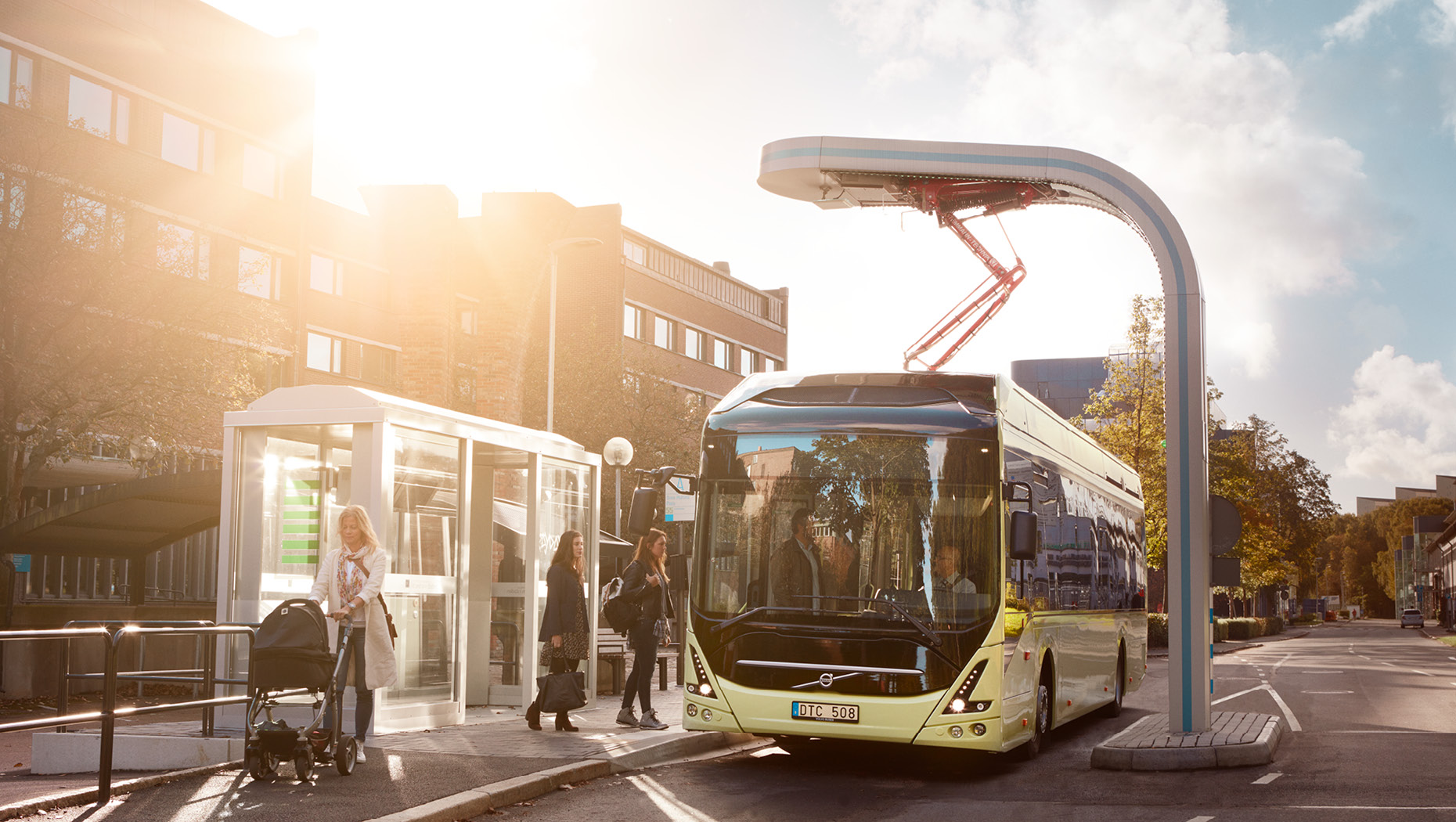
Volvo bus
That Volvo has also dipped its fingers into sustainable waters shouldn’t come as too much of a surprise. As of 2023, the Swedish marque will feature only electrified models on its North American fleet, introduced a wireless charging network for its C40 taxi fleet in Gothenburg, and, together with Starbucks, of all entities, is establishing a network of charging stations across a 2,000 km route between the Colorado Rockies and Seattle.
One of Volvo’s biggest “second-life” projects though came not from its road cars but from its fleet of e-buses as part of a collaboration with Stena Property in 2019. Batteries no longer up to the task of driving 20-tonnes on two axles, but still with “considerable capacity” left to offer, were repurposed by Stena Recycling and/or its subsidiary BatteryLoop. These were then used as energy storage facilities in Stena Property-owned apartment complexes in Fyrklövern, Gothenburg, and, when mated by roof-mounted solar cells, could power each building’s external lights and even communal areas like the laundry.
It was a venture that actually started life as a research project between the Swedish brand, the e-bus manufacturer Göteborg Energi and the Johanneberg Science Park a year earlier, when 14 e-bus batteries were linked together as one 200 kWh “energy warehouse” to power select apartment buildings in Gothenburg, operated by the Riksbyggen housing association.
This was not the most ambitious energy storage facility a brand has come up with, though …
5. Renault powered an island!
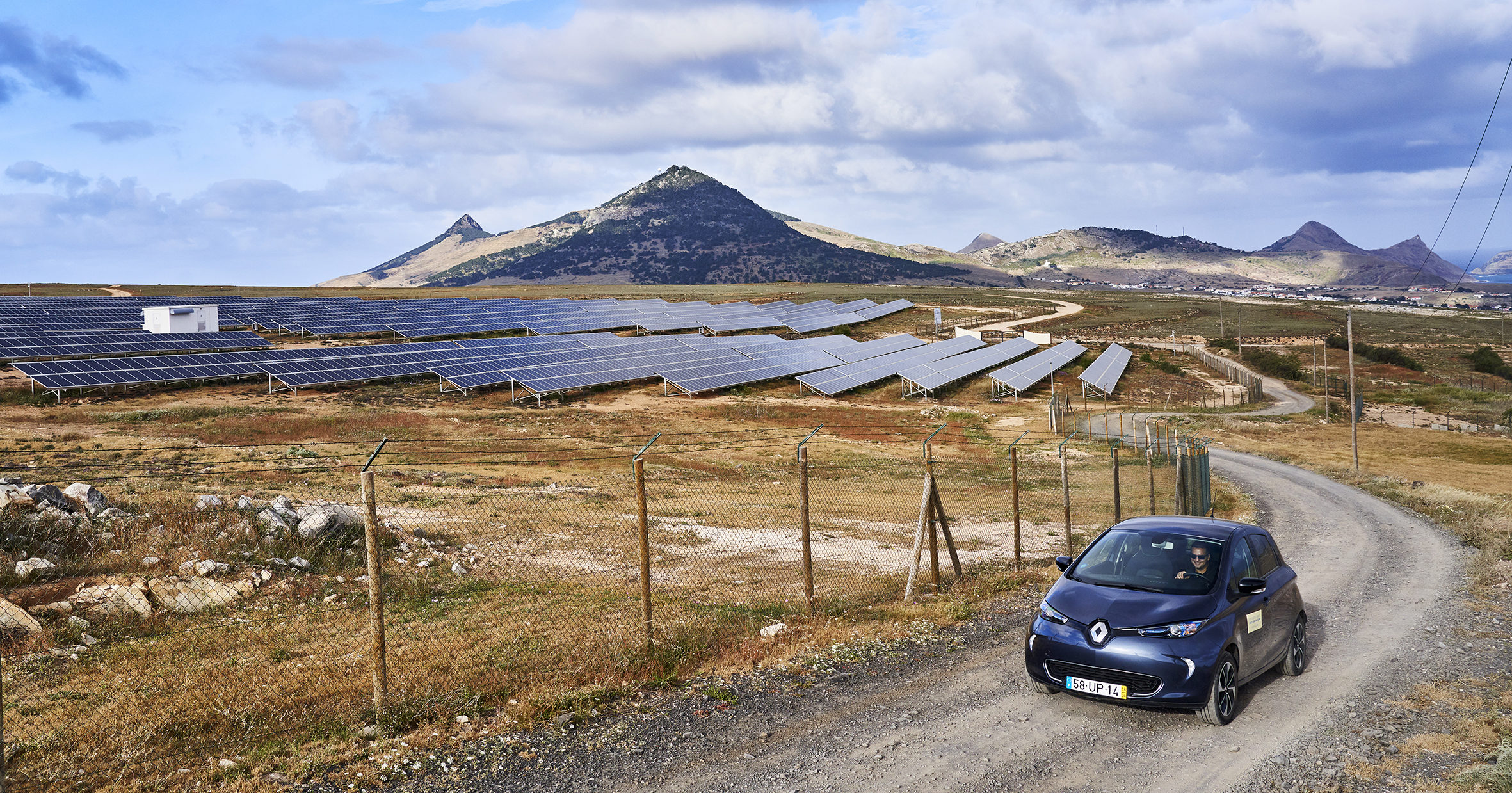
Renault and the Portuguese island of Porto Santo
Yes, you did read that correctly.
Dubbed the ‘Smart Island,’ this project partnered the Renault Group with energy supplier Empresa de Electricidade da Madeira to convert the Portuguese island of Porto Santo into a small-scale energy subsidiary. Rolled out in 2018, and scheduled to last 18 months, the Smart Island aimed to attain 80 per cent non-carbon energy consumption by transitioning its power sources for the island’s 5,000 residents to renewable solar and wind. Power derived from the already established solar and wind farms would be stored in second-life Group Renault batteries, then recovered from the grid as and when needed.
Alongside this, 20 volunteers were provided with 14 ZOEs and 6 Kangoo Z.E.s to go about their daily business. These would then be charged at the end of each day at one of 40 connected charging stations on the island setup by EEM and Renault, examples of which the French brand had first into practice on select highways in Germany and Belgium in 2017.
Significantly, during peak hours, these 20 EVs would be used as temporary storage facilities to feed power back into the island’s grid, essentially creating a state of energy independence for the Smart Island. The project essentially demonstrated how a “local ecosystem” created on Porto Santo could, with enough resources behind, be implemented on a global level.
Very well it was received, too. So much so that a second scheme was introduced on the French island of Belle-Île-en-Mer in late 2018.
